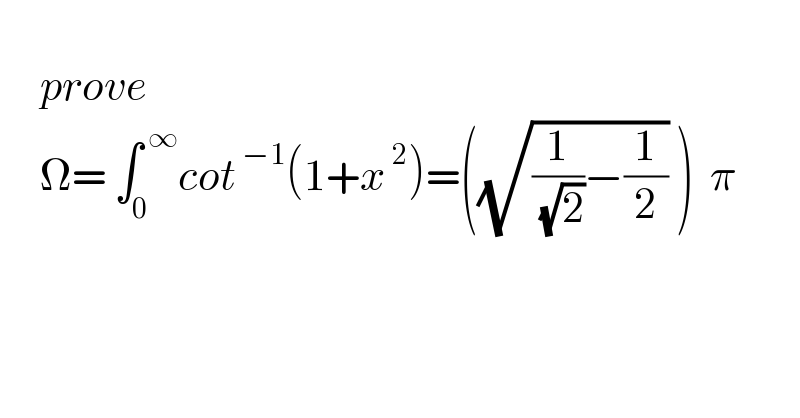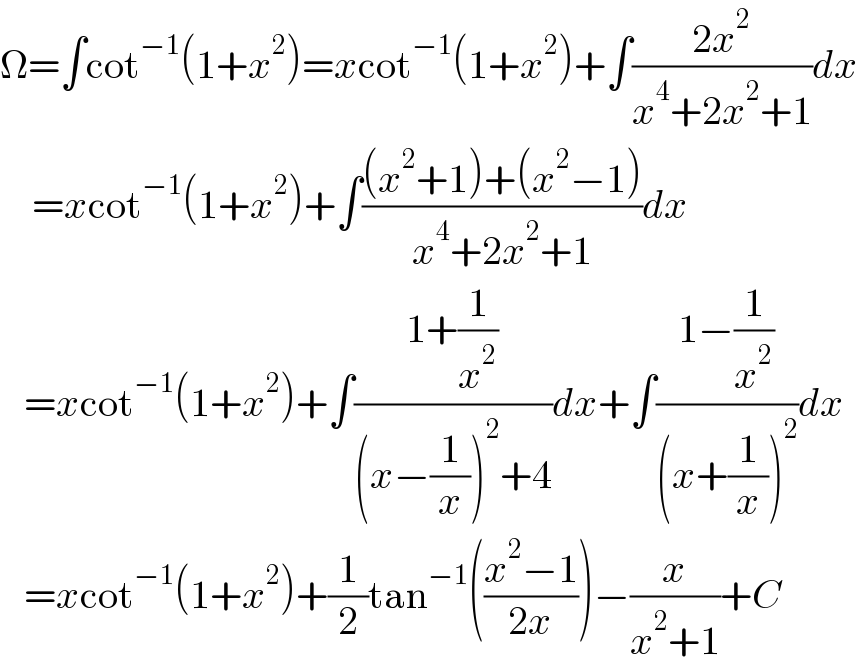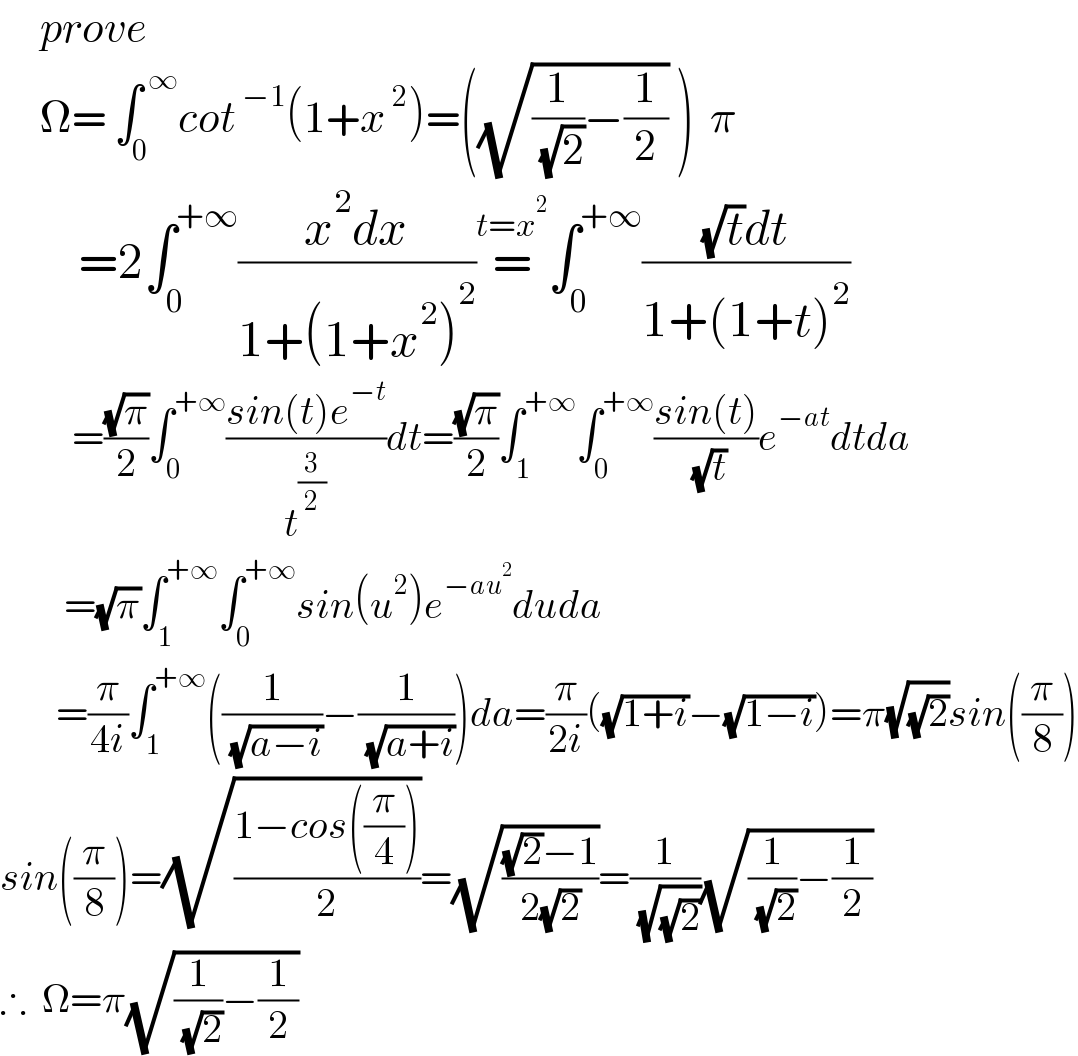
Question and Answers Forum
Question Number 163400 by mnjuly1970 last updated on 06/Jan/22

Answered by Ar Brandon last updated on 06/Jan/22

Answered by Kamel last updated on 07/Jan/22

Commented by mnjuly1970 last updated on 07/Jan/22

| ||
Question and Answers Forum | ||
Question Number 163400 by mnjuly1970 last updated on 06/Jan/22 | ||
 | ||
Answered by Ar Brandon last updated on 06/Jan/22 | ||
 | ||
| ||
Answered by Kamel last updated on 07/Jan/22 | ||
 | ||
| ||
Commented by mnjuly1970 last updated on 07/Jan/22 | ||
 | ||